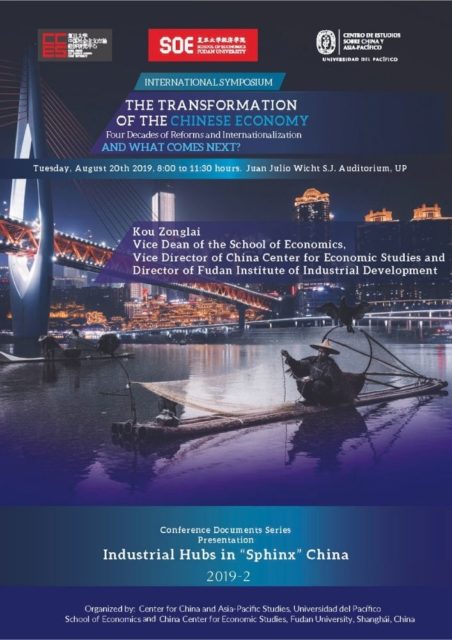Industrial Hubs in “Sphinx” China
Kou, Z. (2019). Industrial Hubs in “Sphinx” China. In “The Transformation of the Chinese Economy: Four Decades of Reform and Internationalization and What Comes Next?” (No. 2019–2; Conference Documents Series of the Center for China and Asia-Pacific Studies at Universidad del Pacífico). https://cechap.up.edu.pe/wp-content/uploads/Presentation-of-Professor-Kou_fin_corregido.pdf
This second publication in the Conference Documents series of the Center for China and Asia-Pacific Studies at Universidad del Pacífico titled Industrial Hubs in “Sphinx” China details the participation of Professor Kou Zonglai, Ph.D., Vice Dean of the School of Economics, Deputy Director of the China Center for Economic Studies and Director of the Institute of Industrial Development at Fudan University, in the International Symposium “The Transformation of the Chinese Economy: Four Decades of Reform and Internationalization and What Comes Next?”. Professor Kou Zonglai explains the importance of the model of what he calls the Chinese sphinx, adopted after the 1978 reform, in achieving the great economic development that now places China as a superpower. This model, which defies conventions, combines a highly decentralized economic base with a highly centralized political superstructure. In this framework, the fundamental role of political entrepreneurs is also explored. These entrepreneurs can compensate for information externalities, solve problems of resource under exploitation and promote industrial hubs, thus creating a meeting point with economic entrepreneurs. Likewise, it comments on the proliferation of industrial hubs which, although has balanced throughout the territory in recent years, has also led to their overlapping between provinces due to the so-called “GDP contest” promoted by the Central Government.
